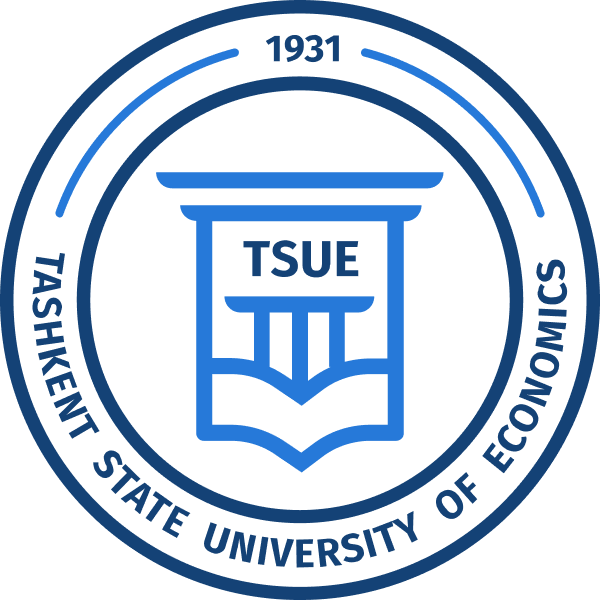Abstrak
Mazkur maqolada O‘zbekiston xususiy sektorida ish o‘rinlarining oshishi tadqiq qilinadi. Natijalar uchta muhim omillar – jarayonlar innovatsiyasi, moliyalashtirish imkoniyatlaridan foydalana olish va eksport ilgari suradi. Tadqiqot turli mamlakatlar va mintaqalarda yangi ish o‘rinlarini yaratish va bandlikning o‘sishiga xizmat qiluvchi omillarni o‘rganuvchi empirik tadqiqotlarni boyitadi
Bibliografik manbalar
C. Zhu, Z. Qiu, and F. Liu, “Does innovation stimulate employment? Evidence from China,” Econ Model, vol. 94, Jan. 2021, doi: 10.1016/j.econmod.2020.02.041.
R. Harrison, J. Jaumandreu, J. Mairesse, and B. Peters, “Does innovation stimulate employment? A firm-level analysis using comparable micro-data from four European countries,” Int J Ind Organ, vol. 35, pp. 29–43, Jul. 2014, doi: 10.1016/j.ijindorg.2014.06.001.
B. Dachs and B. Peters, “Innovation, employment growth, and foreign ownership of firms,” Res Policy, vol. 43, no. 1, pp. 214–232, Feb. 2014, doi: 10.1016/j.respol.2013.08.001.
S. Lachenmaier and H. Rottmann, “Effects of innovation on employment: A dynamic panel analysis,” Int J Ind Organ, vol. 29, no. 2, pp. 210–220, Mar. 2011, doi: 10.1016/j.ijindorg.2010.05.004.
S. Machin and J. van Reenen, “Technology and Changes in Skill Structure: Evidence from Seven OECD Countries,” Q J Econ, vol. 113, no. 4, pp. 1215–1244, Nov. 1998, doi: 10.1162/003355398555883.
B.H. Hall, F. Lotti, and J. Mairesse, “Employment, innovation, and productivity: evidence from Italian microdata,” Industrial and Corporate Change, vol. 17, no. 4, pp. 813–839, Jul. 2008, doi: 10.1093/icc/dtn022.
N. Greenan and D. Guellec, “Technological Innovation and Employment Reallocation,” Labour, vol. 14, no. 4, pp. 547–590, Dec. 2000, doi: 10.1111/1467-9914.00146.
I.M. Okumu, E. Bbaale, and M. M. Guloba, “Innovation and employment growth: evidence from manufacturing firms in Africa,” J Innov Entrep, vol. 8, no. 1, p. 7, Dec. 2019, doi: 10.1186/s13731-019-0102-2.
A. Coad, “Exploring the processes of firm growth: evidence from a vector auto-regression,” Industrial and Corporate Change, vol. 19, no. 6, pp. 1677–1703, Dec. 2010, doi: 10.1093/icc/dtq018.
H. T. Dinh, D. A. Mavridis, and H. B. Nguyen, “The Binding Constraint on the Growth of Firms in Developing Countries,” in Performance of Manufacturing Firms in Africa, The World Bank, 2012, pp. 87–137. doi: 10.1596/9780821396322_CH04.
B. Fowowe, “Access to finance and firm performance: Evidence from African countries,” Review of Development Finance, vol. 7, no. 1, pp. 6–17, Jun. 2017, doi: 10.1016/j.rdf.2017.01.006.
Z. Brixiová, T. Kangoye, and T. U. Yogo, “Access to finance among small and medium-sized enterprises and job creation in Africa,” Structural Change and Economic Dynamics, vol. 55, Dec. 2020, doi: 10.1016/j.strueco.2020.08.008.
B.H. Baltagi, “Why Should We Use Panel Data? Their Benefits and Limitations,” in Econometric Analysis of Panel Data, 3rd ed., Wiley, 2005.
World Bank, “Survey Methodology.” https://www.enterprisesurveys.org/en/methodology (accessed Jan. 03, 2021).
C. Zhu, Z. Qiu, and F. Liu, “Does innovation stimulate employment? Evidence from China,” Economic Modelling, vol. 94, Jan. 2021, doi: 10.1016/j.econmod.2020.02.041.
J. Ortiz and V. Salas Fumás, “Technological innovation and the demand for labor by firms in expansion and recession,” Economics of Innovation and New Technology, vol. 29, no. 4, pp. 417–440, May 2020, doi: 10.1080/10438599.2019.1629535.
J. Mairesse and Y. Wu, “Impacts of innovation, export, and other factors on firm employment growth in Chinese manufacturing industries,” Industrial and Corporate Change, vol. 28, no. 1, pp. 123–138, Feb. 2019, doi: 10.1093/icc/dty066.
E. Ghani and S. D. O‘Connell, “Can Service Be a Growth Escalator in Low Income Countries?,” 6971, 2014.
P. S. Martins, “Employee training and firm performance: Evidence from ESF grant applications,” Labour Economics, vol. 72, p. 102056, Oct. 2021, doi: 10.1016/j.labeco.2021.102056.
D. McKenzie, “Don’t count on business training to generate a lot of jobs and what else we learned in a dynamic literature review update,” World Bank Blogs, Sep. 07, 2021. https://blogs.worldbank.org/impactevaluations/
dont-count-business-training-generate-lot-jobs-and-what-else-we-learned-dynamic?deliveryName=DM117421 (accessed Sep. 08, 2021).
S. Sharma and F. Tarp, “Does managerial personality matter? Evidence from firms in Vietnam,” Journal of Economic Behavior & Organization, vol. 150, pp. 432–445, Jun. 2018, doi: 10.1016/j.jebo.2018.02.003.
International Monetary Fund, How to Achieve Inclusive Growth, 1st ed. Oxford: Clays Ltd, Elcograf S.p.A., 2022. doi: 10.1093/oso/9780192846938.001.0001.
Международная стандартная отраслевая классификация всех видов экономической деятельности ISIC Rev. 3.1

This work is licensed under a Creative Commons Attribution-ShareAlike 4.0 International License.
Copyright (c) 2022 Iqtisodiyot va taʼlim

